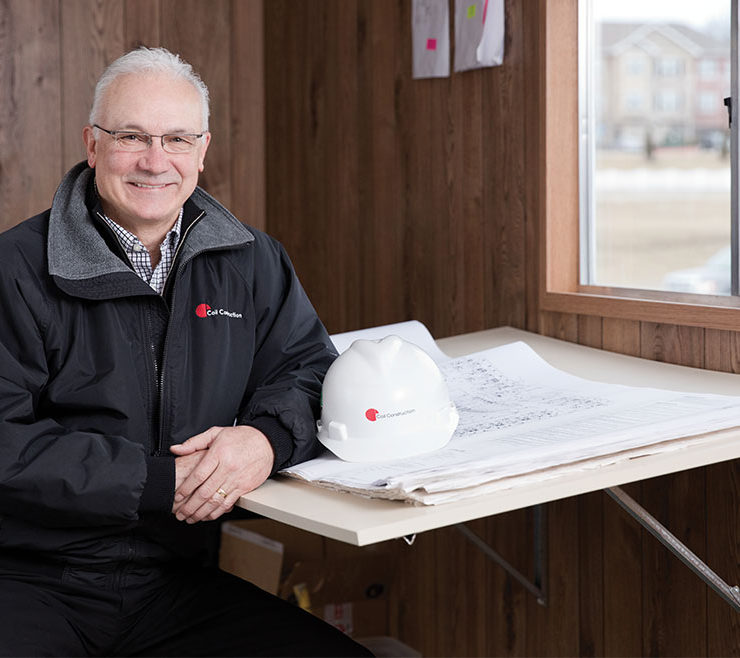The Economy Upswing
For those in the building industry, the past few years have been challenging to say the least. With the recession of 2008, the industry dropped off close to 60 percent nationally. Although we often pride ourselves here in Columbia as recession proof, our numbers weren’t much better. When the recession finally ended, the business community as a whole gave a collective sigh of relief, but the lingering effects have, in many ways, caused the construction industry to rebound a bit slower than most of us would like.
There are multiple reasons for this snail’s pace, but it’s safe to say that business in general hates uncertainty. With the recession still fresh in many CEOs’ minds, expansions, new builds and additions are facing heightened scrutiny. Couple this with an air of uncertainty many of us feel in response to the stock market’s all-too-recent wild ride and events such as the 2012 presidential election, the debt crisis in Europe, the possible fiscal cliff, and, for good measure, throw in the Mayan end-of-the-world prediction.
Although the recession is technically over, the aftershocks are still influencing business decisions today. For instance, many businesses took drastic measures to avoid going under. They quit spending, and they laid off employees and/or reduced their square footage to save money. As businesses got leaner to weather the storm, a new culture took hold and prompted even those who could afford to spend to adopt a wait-and-see attitude. This mindset has been hard to shake.
Confidence on the rise
The good news is the economy is definitely on an upswing. In fact, 2013 ushered in several positive changes. To begin with, many of the concerns that plagued the business world have finally been resolved, and various stopgap measures to avoid future business crashes have been put into place. In addition, the trends are looking good. The economic forecast is on a sharp increase through at least 2015 (McGraw Hill Construction), and the stock market is now, though fluctuating, at an all-time high. With the added bonus that financial institutions are starting to ease up on some their requirements, consumer confidence is on the rise both nationwide and locally.
Such a positive environment is prompting many companies to reinvest in themselves with money that had been previously parked on the sideline. Locally, commercial building permits are up. There were 63 such permits in Columbia in 2011, 75 in 2012, and 87 are currently scheduled for 2013 (City of Columbia Department of Community Development). Vacancy rates for offices and local industries are trending downward. Residential permits in Columbia are going up, and the housing inventory on the market is dropping.
The fact that Columbia is also growing is promising. Of the more than 168,000 estimated people in Boone County in 2012, Columbia takes the lion’s share at a little more than 113,000. This creates a greater demand for jobs and houses, restaurants, stores and services. Although the current demand is greater for more additions and remodels for efficiencies versus ground-ups, overall people are starting to look for ways to enhance their existing space, commercially and residentially. This bodes well for construction as a whole.
Additionally, with national trends stabilizing, material prices and lending rates not getting any cheaper, and with lending institutions relaxing their requirements, the timing couldn’t be better for those considering construction work.
Steps to ensure success
–Keep in mind that the building or alteration needs to serve you, not the other way around. A return on your investment is essential, so consult with a CPA, your CFO, a banker and/or a construction consultant to make sure the build or alternation truly makes sense. For example, at Coil Construction, we added a smart room, essentially a room enhanced with multimedia components, which serves our business in multiple ways. First it serves as an additional collaborative space. The enhanced technology not only improves employee conditions, which often translates into increased production, but it also serves as a showroom to clients to display available design innovations. And with an energy-efficient design, it will pay out in three to five years.
-Estimate your risk. Begin by forecasting your industry and your local trends. Columbia is a fairly stable economic environment comparatively and enjoys a growing population, which helps lower risk.
–Green up when and where possible. Columbians tend to be eco-conscientious. Many of our construction clients have grown up with recycling education that influences their building choices. So consider your building materials. Use eco-friendly paints and glues when you can, and reuse debris when possible. Consider existing infrastructures versus urban sprawl, which can often be more cost-efficient.
-Use advancements in technology when it makes sense. Ask important questions before investing. Does it save money over time? Ideally, advanced technology should actually overpay for itself. For example, installing and utilizing a flat-screen monitor for meetings instead of paper saves paper and time. Personally, I look for technology that helps me sell construction work. If it accomplishes this goal, then it was a good move.
No doubt the construction business took a big hit in the past few years. Fortunately, many businesses weathered this storm and hopefully made changes to avoid future fallout from recessions to come. But the economy will fix it itself once again, and overall we will be better off because of it. For now, the future looks very promising for both the consumer and the building industry.





